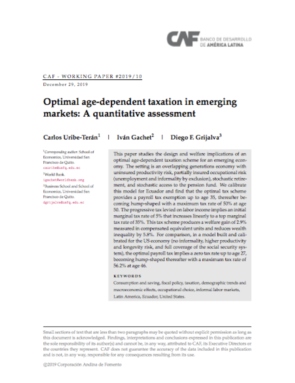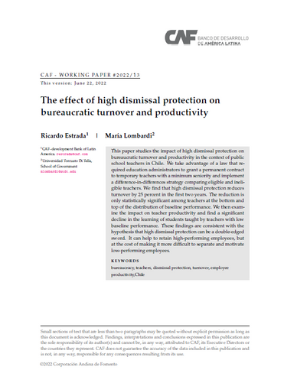| dc.contributor.author | Álvarez-Parra, Fernando | |
| dc.contributor.author | Brassiolo, Pablo | |
| dc.contributor.author | Fajardo, Gustavo | |
| dc.coverage.spatial | América Latina y el Caribe | es_ES |
| dc.date.accessioned | 2022-01-27T16:02:07Z | |
| dc.date.available | 2022-01-27T16:02:07Z | |
| dc.date.issued | 2021-12-22 | |
| dc.identifier.citation | Álvarez-Parra, F., Brassiolo, P., & Fajardo, G. (2021, December 22). Who attract the public sector compensation schemes?: evidence from Latin America. Caracas: CAF. Retrieved from https://scioteca.caf.com/handle/123456789/1868 | en_GB |
| dc.identifier.uri | https://scioteca.caf.com/handle/123456789/1868 | |
| dc.description.tableofcontents | Compensation schemes tend to differ markedly between public and private sector jobs, which can affect the relative preferences of potential employees towards those jobs. We explore this through two informational experiments embedded within a large household survey in ten Latin American cities. We focus on two of the most relevant features of compensation schemes: the wage level and the existence of pay-for-performance. We find that the common characteristics of public sector contracts—i.e. flat wages, a negative wage gap with respect to the private sector in the upper end of the distribution, and a low prevalence of payfor- performance rules—diminishes the attractiveness of public employment among high-performing, high-ability individuals. | es_ES |
| dc.language.iso | en | es_ES |
| dc.publisher | CAF | es_ES |
| dc.subject | Desarrollo | es_ES |
| dc.subject | Economía | es_ES |
| dc.subject | Investigación socioeconómica | es_ES |
| dc.subject | Políticas públicas | es_ES |
| dc.subject | Sector privado | es_ES |
| dc.subject | Sector público | es_ES |
| dc.title | Who attract the public sector compensation schemes?: evidence from Latin America | es_ES |
| dc.type | workingPaper | es_ES |
| dc.publisher.city | Caracas | es_ES |




